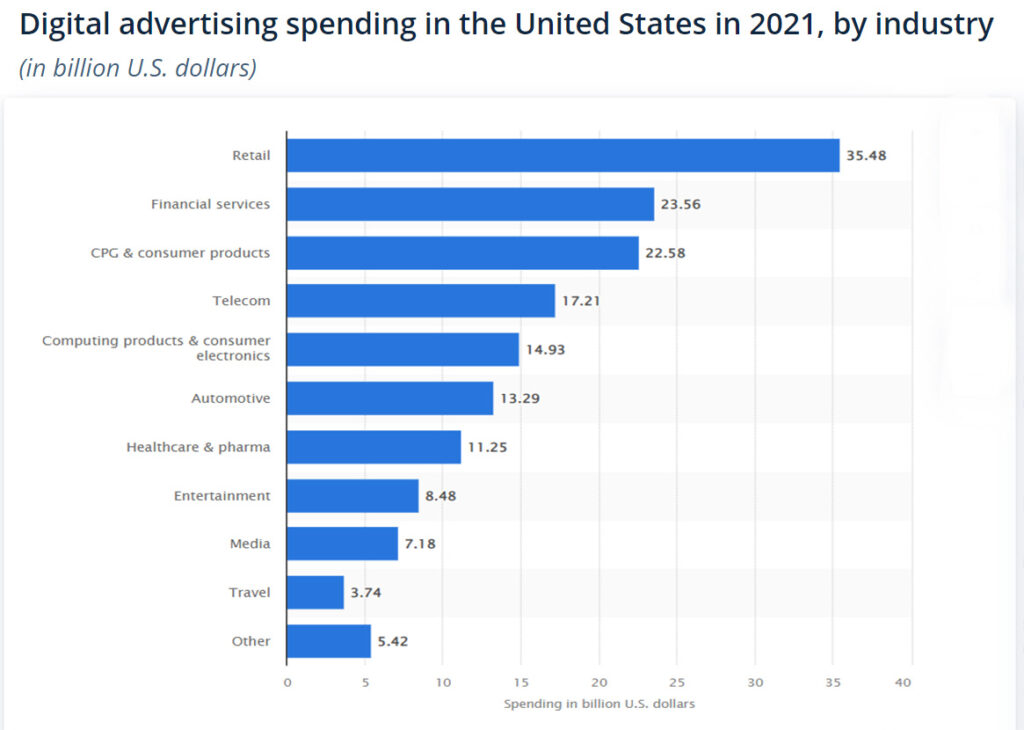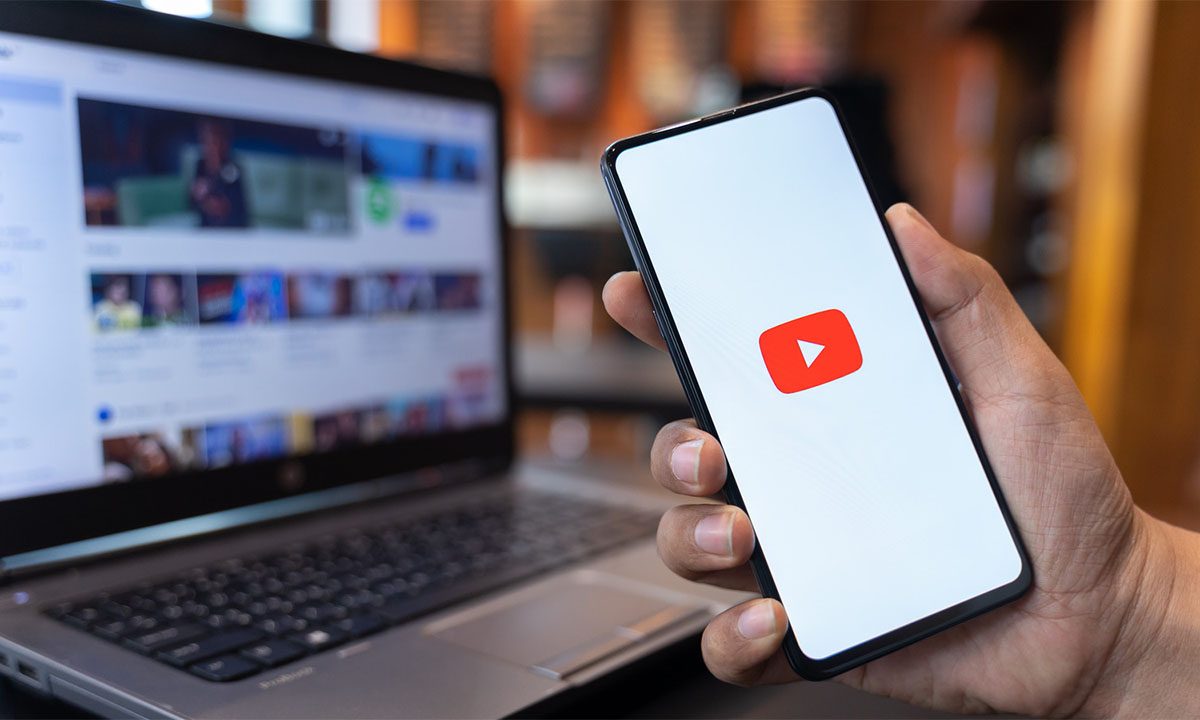Marketing is a key aspect of every business. It is the means by which brands capture the attention of their customers so that they can sell their products and services. There are two types of marketing – traditional and digital. Traditional marketing has been around for ages. It primarily utilizes TV, magazines, newspapers, billboards, radio, and other traditional forms of advertising to promote a business. Whereas digital marketing gained a lot of traction within the last couple of decades. This type of marketing mainly uses the power of the internet and social media to boost brand exposure and create audience engagement. Both types of marketing have their own set of advantages and disadvantages. Here is a brief overview of the differences.
| Categories | Traditional Advertising | Digital Advertising |
| Nature | Static | Dynamic |
| Conversion rate | Slow | Fast |
| Engagement | Low | High |
| Targeting | Standardized | Customized |
| Tracking | Not possible | Possible |
| Tweaking | Not possible | Ad can be tweaked |
| Reach | Local | Global |
| Results | Delayed | Quick, real-time |
| Communication | One-way | Two-way |
| Cost | Expensive | Affordable |
| Effectiveness | Less effective | More effective |
| Return on investment | Difficult to measure | Easy to measure |
| Interruptions | Cannot be skipped | Can be skipped |
With the advent of digital marketing, the marketing landscape has seen a huge shift. Many businesses and corporations have adopted digital advertising and are now moving towards promotion through social media platforms. In this article, we will be looking at how digital advertising spending compares to traditional marketing. And also, we will be looking at some of the current trends and future prospects of the global market.
Traditional Marketing Spending vs Digital Marketing Spending
According to Statista, as of February 2022, digital marketing spending has increased by 16.2% whereas traditional marketing spending rose by 2.9% when compared to August 2021. Similarly, advertising spending for August 2021 increased to 15.8% and 1.4% from February 2021 for digital and traditional advertising respectively. As a matter of fact, spending on traditional advertising has been on the decline throughout the period between February ‘20 to February ‘21. Whereas digital marketing spending has only seen an increase in spending since February 2012. What this indicates is that brands are more inclined toward spending their marketing budget on digital promotion rather than traditional advertising.
It has been forecasted by eMarketer that the spending on digital ads is much higher than their initial expectations. Here is a chart that shows the yearly growth in spending for digital ads in the U.S.
| Year | Spending ($ in billions) |
| 2020 | 152.71 |
| 2021 | 211.20 |
| 2022 | 239.89 |
| 2023 | 270.73 |
| 2024 | 293.34 |
| 2025 | 315.32 |
Compared to 2020, digital ad spending increased by 38.3% in 2021. The primary drivers behind this increase are retail media networks and connected TVs. There has been a drastic increase in the usage of these mediums for online shopping and video streaming. In addition, social networks and search engine advertisements also played a significant role as consumers are spending a large chunk of their time looking for products and information online.
So, do all these data unequivocally prove that marketers would rather invest in digital advertising than traditional marketing? Well, not quite. Although it has been reported that approximately 64.4% of the total advertising budget was spent on digital media in 2021, that means the remaining 35.6% of the budget was allocated to traditional media. This goes to show that traditional methods of promotion still hold a significant influence over the current global market.
Which Industries Are Influenced The Most By Digital Marketing?
The internet has completely transformed how businesses conduct themselves. Gone are the days when companies would solely rely on paper and TV advertisements. Now, marketers have a much wider range of promotional strategies that they can use. Traditional forms of advertising are largely ineffective in the modern age, especially when compared to the potential of digital marketing tactics. Naturally, this change in perspective has influenced the way several industries operate. Whether talking about retail, entertainment, finance, education, healthcare, technology, or any other industry, it can be said with some certainty that digital marketing has had an impact on all of them.

Retail
The retail industry has seen the most amount of dollars spent on digital advertising in the U.S. According to estimates, the total digital ad spending for the U.S. accounted for $35.48 billion in 2021. This is a drastic increase from previous years which was $28.23 billion and $27.38 billion in 2020 and 2019 respectively. Usually dubbed as the “biggest advertiser on Earth”, Amazon spent nearly $451.2 million of its $10.07 billion annual marketing budget on Search Engine Marketing back in 2017. This should serve as evidence for why when people search for a particular item, Amazon’s website is the first one to pop up. While Amazon continues to dominate the retail media landscape, Walmart is rapidly gaining market share by spending extensively on digital marketing. Walmart generated $2.1 billion in advertising revenue in 2021, thanks in large part to its digital shopping network, Walmart Connect.
Entertainment
One of the most prominent impacts of digital marketing has been on the entertainment industry. Companies like Netflix, HBO, Hulu, Disney, etc. have completely embraced promotion through digital media. As an example, HBO spent 89% of its digital ad budget on HBO Max in January 2021, which amounted to approximately $47 million. Similarly, most of Netflix’s promotion campaigns are done through digital and social media platforms. According to Statista, the entertainment industry in the U.S. spent close to $7.6 billion dollars on digital advertising in 2019. As of 2021, the total spending on the entertainment industry is estimated to be $8.48 billion.
Healthcare
In the past, consumers would select health and wellness products based on TV ads and the suggestion of their peers. People are now able to conduct their own research in regards to their lifestyle choices thanks to the internet. This allows them to have more in-depth knowledge about their healthcare needs. Marketers recognize this and encourage health brands and pharmaceutical companies to include scientific information in their digital promotional material for their products. That way, not only will the consumer understand what are the composition of the products that are being marketed to them, but also develop a deeper trust with healthcare brands. In 2019, the healthcare and pharmaceutical industries in the United States spent $8.34 billion on digital advertising, according to Statista. GlaxoSmithKline, one of the leading pharmaceutical brands in the world, allocated 38% of its marketing budget to Facebook ads, 21% spend share on Instagram, and 19% spend share on desktop videos. On a similar note, Pfizer spent $39.1 million of its marketing budget on its digital ad campaigns. Of the total amount spent, Pfizer dedicated 69% to Facebook ads, 14% to desktop video, and 8% to Instagram.
Education
Education is the backbone of every country. And over the past decade, the education sector has been slowly moving towards technology to provide users with education facilities via the internet. Marketers are aware that there is a very large growth potential for these facilities as students from all over the world are able to access these services from the comforts of their homes. That is why advertising and promotion of education services have skyrocketed, especially in the digital space. It was recorded that in India, 91% of the ad budget from Edtech companies was specifically dedicated to digital advertising. Furthermore, it was revealed by Brighteye Ventures, that organic marketing and content marketing were some of the most effective forms of user acquisition for Edtech companies in 2020. However, social media marketing was the most dominant among all other marketing channels.
Current Trends and Future Prospects of the Global Market
Although digital marketing is currently one of the most popular forms of promotion, it has yet to overtake traditional marketing. According to eMarketer, global spending on digital media reached $613.89 billion, while conventional media continue to have a dominant foothold in the industry with a spending of about $762.52 billion. The reason behind this huge difference is likely to be the fact that conventional advertising has been around for ages, whereas digital advertising gained relevance within the last few years.
However, online marketing strategies have evolved a lot from what it was just a couple of years ago. A very popular trend that took the world by storm during the COVID-19 pandemic was in-game concerts. Since many people were not able to physically attend music festivals during the lockdown, game publishers and music artists collaborated together in a very innovative way. Rapper Travis Scott performed a live music event in the very popular multiplayer game – Fortnite, for all his fans. This goes to show the immense potential of digital media and what marketers can do with online platforms.

Another interesting development can be seen in the video streaming industry. Advertising-based video on demand (AVOD) platforms saw exponential growth in 2021 with an estimated watch time increase of 200% in the U.S. These platforms include the likes of YouTube, Facebook Videos, Twitch, etc. Whereas subscription video on demand (SVOD) platforms like Netflix, Hulu, Disney+, and others, have been losing total watch time when going head-to-head with AVOD platforms. Surveys suggest that consumers prefer to have services that follow a free-with-ads model rather than an ad-free subscription model. Hence, this can be another great avenue for marketers to capitalize on.
Search engine marketing and social network marketing had a very thriving year in 2021. Throughout the course of the year, search marketing had a growth of 39.1% which was the largest year-to-year increase since 2008. Social media marketing had also grown, although not as much as search marketing. But it is predicted that by the end of 2022, social network juggernauts like Facebook, Snapchat, Instagram, TikTok, and Twitter, will overtake the search engines in terms of ads.
Traditional vs Digital Advertising: Which One Is Better?
Although it is easy to pick digital advertising over traditional advertising because of its popularity, reach, and economic nature, but blindly doing so would not be wise. In some cases, a great social media promotional campaign may fall short when compared to a simple newspaper ad. That is because there are a variety of different factors at play when it comes to a successful ad campaign. For instance, it is more favorable for small businesses to do digital marketing as it is comparatively cheaper than traditional marketing. But on the other hand, if the organization has a large following, then using a mix of both traditional and digital marketing strategies would be more favorable as it will reach the most number of people. In summary, spending the ad budget on digital promotion is a good idea when prioritizing customer engagement and getting instant results. Whereas, for long-term impact and improving brand image, traditional marketing means would be more suitable.


